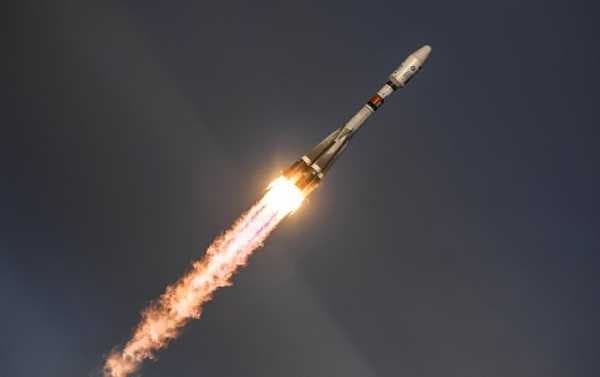
MOSCOW (Sputnik) – Fregat upper stage rocket carrying Glonass-M satellite has separated normally from the third stage of the Russian Soyuz-2.1b carrier rocket, the Russian Defense Ministry told reporters on Friday night.
“The head block of the medium capacity space rocket Soyuz-2.1b, consisting of Fregat upper stage rocket and Glonass-M satellite, separated normally from the third stage of the carrier at the estimated time of 23:38 Moscow time [20:38 GMT],” the ministry said.
The carrier was launched at 23:17 Moscow time from the Russian Plesetsk сosmodrome.
The ministry said that fregat upper stage rocket has successfully placed Glonass-M satellite into orbit after separating from the third stage of the Russian Soyuz-2.1b carrier rocket.
Glonass-M injection into orbit took several hours.
“The medium capacity space rocket Soyuz-2.1b that was launched on Saturday, November 3, at 23:17 Moscow time [20:17 GMT] from the state Plesetsk cosmodrome (Arkhangelsk Region) has successfully placed the Russian space navigation spacecraft Glonass-M into the calculated orbit in calculated time,” the ministry said.
The ministry went on to say that the land forces of the Titov Main Test and Space Systems Control Center had assumed control of the Glonass-M satellite.
Later, the ministry said that the Russian Aerospace Forces have finished their operations on deorbiting the Fregat upper stage rocket from the final orbit of the Glonass-M satellite.
“After placing into orbit the Glonass-M satellite, launched on November 3, 23:17 Moscow time [20:17 GMT] from the Plesetsk cosmodrome via the medium capacity space rocket Soyuz-2.1b, the specialists of the Titov Main Test and Space Systems Control Center have carried out operations on deorbiting Fregat upper stage rocket from the final orbit of the satellite to the so-called disposal orbit,” the Defense Ministry said.
The ministry added that the Russian Aerospace Forces’ space control center had included information on Fregat and Glonass-M into the main catalogue of the Russian space control system objects.
The catalogue is a unified database of all the artificial objects in space, located at the heights from 120 kilometers to 50,000 kilometers (74.6-31,068 miles). It contains information about 1,500 parameters of each of the objects, including their international identification numbers, launch date and location, type, purpose, mass, and size. Over 60,000 measurements are proceeded every day in order to update the catalogue.
Glonass is operated by the Russian Aerospace Forces. The system allows real-time positioning and speed data for surface, sea and airborne objects around the world.
Sourse: sputniknews.com






